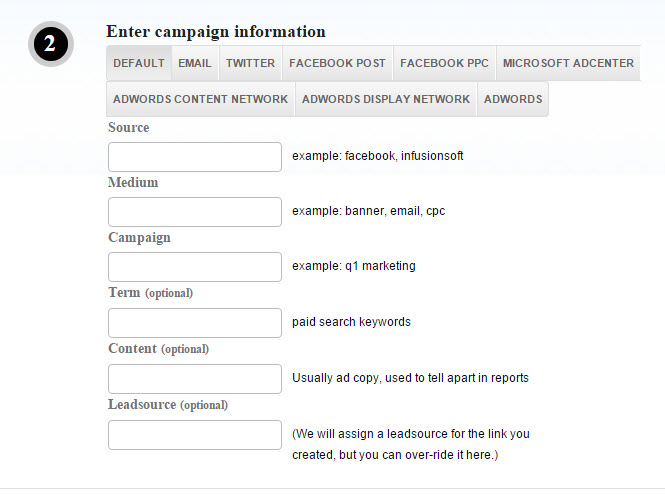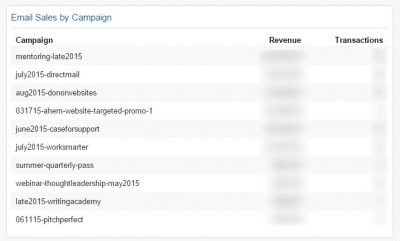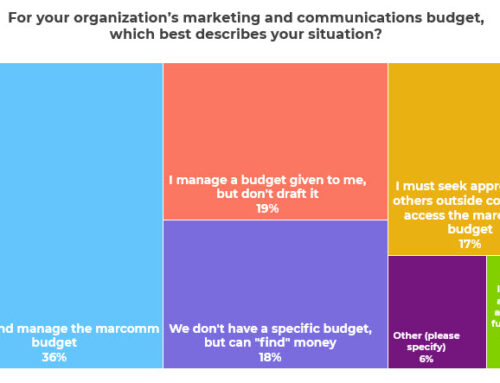
You may have noticed some strange code on the end of links you click in emails or from social media . . . things like utm_source=newsletter&utm_medium=email. But do you know why that code is there or what it is doing? Or that you should be using it too?
UTM stands for Urchin Tracking Module, and the UTM codes or parameters you add to the end of your standard website links give Google Analytics much more detail about what those links are and how you are using them.
Instead of Google just seeing that a random email or Facebook link sent traffic to your donation page, it could be telling you, at a glance, that the first email in your fall campaign generated the most donations. But the second email in that campaign actually raised more money. And together they still didn’t raise as much as your spring appeal.
The same is true for the links you share on social media . . . is Facebook or Twitter better at sending traffic to your thought leadership blog posts? Is just posting the title and link better, or should you add commentary with the link? You could easily discover the trends if you were using UTM parameters to better track what you were doing with the links you shared.
The Basic Parameters
There are several UTM parameters you can use, but here are the main ones:
Campaign Source: Think of this as your different audiences or lists. For example, we use “news” as the source for our email newsletter and “promo” for the single topic emails. You could also put Facebook or Twitter as a source.
Campaign Medium: This is the main communications channel, so for example, we use “email” for both the email newsletter and the single topic emails. You might also use “social” and “ads.”
Campaign Name: This is how you can group together a series of emails, social media links, ads, etc. We typically group ours by the different trainings and programs we are talking about (e.g. the Communications Director Mentoring Program versus the All-Access Training Pass). You might use it for things like “Spring Membership Drive” versus “Year-End Campaign.”
Campaign Content: You can use this one to track different versions or approaches you are trying. So in our thought leadership example above, you might use “title only” versus “commentary” to differentiate between the different ways you are sharing your blog posts. Or you could include parts of a subject line or date to help you see quickly which piece of content is being tracked.
How to Create the Links
You don’t need any fancy software to do this – you just add the parameters on to your links. But you do need to get the format just right, so it’s helpful to use a formatting tool. You can use the Google URL Builder or this one on Facebook. Your website CMS or your CRM database may have URL builders built into them too.
What Google Does with the Information
Within your Google Analytics account, you can then slice and dice the information however you want based on source, medium, campaign, content, etc. Google has some of this built into its own reporting, so if you start to use UTMs you will see them popping up in various places within Google Analytics. You can also create your own custom dashboards to show you exactly what you want to see.
For example, here is one of our charts for sales attributed to email marketing by campaign. What you see in the list is what we would have put in the “campaign” UTM field for all the emails that resulted in transactions. Each campaign could include one or more emails. We’d look at a different chart to get that level of detail.

How We Are Using UTM Parameters at Nonprofit Marketing Guide
In the last several months, we’ve started religiously using UTM parameters ourselves with email and to a lesser degree with social media, with some help from our Google Analytics coach, Eric Squair of DataHabits. (Check out Eric’s free tutorial course on Google Analytics — and here is the page about UTM codes in particular.)
For example, now I know with a great deal of certainty, that since May 1 of this year, 53% of the paid registrations on our website are attributed to our email marketing.
Within the email marketing, 66% are from links in single-topic promo emails, 31% of the registrations are from links in our Wednesday newsletter, and 4% are from links in partner emails.
Do you have the same information about your fundraising or event registrations? You would if you were using UTM codes!
Questions or Insights?
What questions do you have about UTM codes? If you are using them, what insights did you gain? Please share in the comments.





